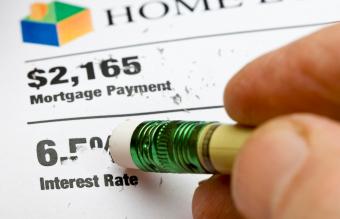
Adjustable rate mortgages are also commonly referred to as ARMs. ARMs are mortgages with payments and interest rates that fluctuate according to the changes in the economic index.
Economic Index
Put simply, an economic index is a guide lenders use to set mortgage rates. Most often, the index is related to the return rate of one, three, or five-year U.S. Treasury Securities. One of the reasons different mortgage companies will offer you varying rates on an adjustable rate mortgage has to do with the fact that not all mortgages rates are tied to the same index.
Other factors that may also directly or indirectly affect the mortgage rate you pay include:
- Gross domestic product (GDP), meaning the amount of goods and services produced in the United States.
- Consumer Price Index (CPI), meaning the average change over a set period of time in the price paid for U.S. consumer goods and services.
- Producer Price Index (PPI), meaning the average change over time in the price a seller receives for domestically produced goods and services.
- Unemployment rate.
- Housing starts, meaning that the number of people purchasing homes affects the mortgage rates you will pay.
Adjustable Rate Mortgage Basics
As the economic index that was used to set your original mortgage interest rate rises and falls, your monthly payments also fluctuate. This means you must be flexible and build enough into your budget constraints to allow for an increase in your mortgage payments. It also means you need to be knowledgeable in how indexes work or be willing to take the risk that the rate you agree to pay today will not increase drastically over the life of the loan.
Adjustable Rate Mortgages Pros
You may be asking yourself why anyone would think an ARM is a good idea. It really depends on your specific circumstances. Some examples of when an adjustable rate mortgage may make sense for you:
- If you can get a significantly lower interest rate with an ARM than with a fixed rate mortgage and you don't anticipate a significant increase the economic index over the life of the mortgage;
- If you can get a significantly lower interest rate with an ARM than with a fixed rate loan and you intend to sell your home in few years, allowing little time for a drastic interest rate/index increase;
- If you expect to see a significant increase in your income over time, you may be able to get into a larger home now and worry about higher payment later, when your income is apt to increase enough to absorb the cost of elevated mortgage payments.
ARM Cons
The two biggest cons to signing an ARM are:
- You must have a tolerance level for risk. If you take advantage of a discounted ARM, you may be looking at a significant increase in your mortgage payment as soon as the second year of your mortgage.
- Negative amortization can lead to you owing more on your home than the amount of the original note. Amortization is the process by which your loan amount is reduced by your payments, less interest; however, if you find your ARM has increased more rapidly than your ability to make full mortgage payments, the mortgage company will apply any partial payments to interest first. If the partial payments do not cover the full amount of the interest due that month, it will be added into the principal amount of your loan. This, in effect, makes your principal balance go up. Payment caps can do the same thing.
More About Payment Caps
One way to make sure that your adjustable rate mortgage payments do not grow beyond your means is to make sure your mortgage comes with a payment cap. A payment cap limits the amount you can expect to pay each month. The problem that many mortgage holders run into is their mortgages come with payment caps but not interest rate caps. When that happens, it can lead to negative amortization because the capped payment may not even cover the monthly interest due on the mortgage.
Even if a mortgage holder does get a payment cap and an interest cap, limiting both the maximum amount he is asked to pay each month and the maximum interest rate the mortgage company can charge, he may be in for another shock. Often interest caps will keep your interest down regardless of index highs, but the terms of the mortgage note will allow the mortgage company to roll increases forward to the next adjustment period. What this means is that if at the end of Year 1 interest rates go up 2% and you have an interest rate cap of 1%, the mortgage company can charge the remaining 1% at the end of Year 2, even if the indexes go back down that year.
Not the End of the World
While getting into an adjustable rate mortgage may not be the best answer for everyone, it can often mean the difference between purchasing the home you want and the one your wallet says you can afford. And, in the long run, an ARM can actually save you money during period of declining interest rates.
If you find you have signed up for an ARM but it no longer meets your needs, you may not be stuck with it for the term of the note. Unless your adjustable rate mortgage comes with an early pay off penalty, you always have the option of refinancing your home, and some ARMs come with the option to later convert them to a fixed rate mortgage. However, it is important to make sure the conversion fee does not negate any savings you may see from going to a fixed rate mortgage.







